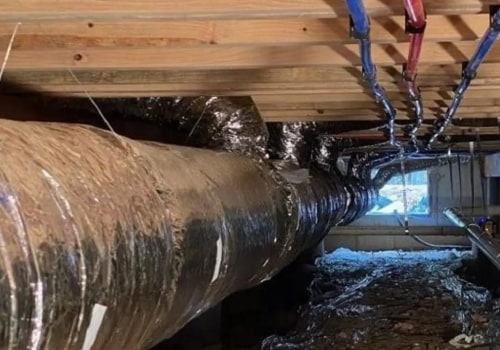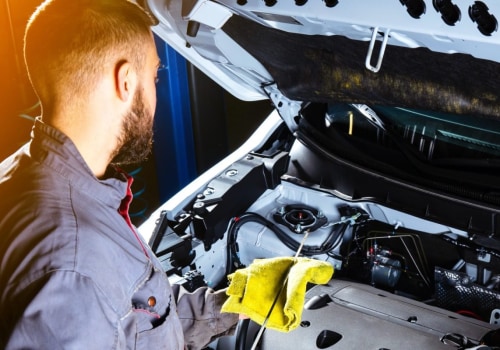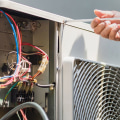Key Takeaways
- Overview of air cooling mechanisms and their significance for effective functioning.
- Significance of adequate setup for optimal system performance and longevity.
- Steps to take prior to beginning the setup process for a smooth installation.
- Recommended techniques for efficient and effective air conditioning setup.
- Suggestions for maintenance and care after the installation is complete.
- Frequent errors to steer clear of to ensure a successful installation.
Roundup Of Best Practices For Air Conditioning Installation | Understanding Air Conditioning Systems
A thorough understanding of air conditioning systems is essential for a successful installation. A Roundup of Best Practices for Air Conditioning Installation begins with recognizing the various types of air conditioning units available, such as central air conditioning and room air conditioners. Each system comes with specific requirements and features that must be considered during installation. Ensuring proper placement of the air conditioning unit can significantly enhance its performance and efficiency. Observing the manufacturer’s guidelines is crucial to achieving optimal results. Understanding how to manage duct sealing and insulation further contributes to maintaining the quality of conditioned air throughout the space. By being informed about these aspects, one lays the groundwork for a reliable heating and air conditioning system.
Roundup of Best Practices for Air Conditioning Installation | Types of Air Conditioning Systems
Choosing the right type of air conditioning system is crucial for ensuring optimal air quality and comfort in your space. Room air conditioners provide targeted cooling and are ideal for smaller areas, while central air conditioners deliver consistent air temperature across larger homes. Each option has its benefits. A central air conditioner, for instance, integrates seamlessly with an HVAC system, maintaining efficient air intake and cleaning air throughout the entire building. This roundup of best practices for air conditioning installation emphasizes selecting a system that aligns with your specific needs and space requirements.
Understanding the various types of air conditioners is part of a successful installation strategy. The effectiveness of an air conditioner depends on how well it is matched to its intended space. Central air conditioners often require proper ductwork for optimal efficiency, while room air conditioners may only need a suitable window or wall opening. Evaluating these factors during the planning phase can significantly impact both the performance of the system and overall indoor air quality. This roundup of best practices for air conditioning installation integrates these considerations to help users make informed decisions.
Components of an Air Conditioning System
An effective air conditioning system relies on several critical components which work in harmony to provide optimal heating and cooling. Central air systems typically consist of an outdoor unit housing the compressor and condenser and an indoor unit containing the evaporator coil. Proper airflow is essential for maintaining efficiency. An adequate cooling load calculation is necessary to determine the cooling capacity needed, ensuring that the system meets the demands of the space. Air ducts play a vital role in distributing cooled air throughout the home, making it important to select high-quality materials for both efficiency and longevity.
Regular routine maintenance is crucial for maximizing the lifespan and performance of HVAC systems. One of the most important components within these systems is the air filter, which should be regularly replaced to ensure clean and unobstructed airflow. Neglecting to maintain these components can lead to reduced efficiency and increased energy costs. The Roundup of Best Practices for Air Conditioning Installation emphasizes the significance of addressing these components during installation to ensure optimal performance and comfort throughout the year. Proper installation sets the foundation for a reliable heating and cooling system that operates effectively and efficiently.
- Regularly check and replace air filters to maintain clean airflow.
- Schedule annual professional maintenance to inspect and service the system.
- Seal and insulate ducts to prevent energy loss and improve efficiency.
- Keep the outdoor unit clear of debris and vegetation for proper airflow.
- Use a programmable thermostat to optimize energy usage and comfort.
- Consider upgrading to energy-efficient models to reduce operating costs.
- Monitor refrigerant levels to ensure the system operates at peak performance.
Importance of Proper Installation
Proper installation of air conditioning systems directly influences their efficiency and longevity. A thorough Roundup of Best Practices for Air Conditioning Installation emphasizes the importance of ensuring optimal air flow and maintaining appropriate air pressure throughout the system. For instance, the positioning of heat pumps plays a critical role in balancing room temperatures and efficiently managing heat sources. Important elements, like air filters, must be correctly installed to maximize system performance and maintain air quality. Technicians should wear protective equipment while monitoring superheat levels to ensure the system operates within its optimum range. Following these practices not only enhances heating and cooling capabilities but also extends the lifespan of the equipment.
Impact on Efficiency and Performance
Efficient air conditioner installation directly influences the system's overall performance. Adhering to the Roundup of Best Practices for Air Conditioning Installation ensures that all components work harmoniously. Proper insulation must be in place to trap cool air inside and prevent warm air from infiltrating the system. Employing personal protective equipment during the installation process protects technicians while they manage various aspects of the new air conditioning setup, such as ductwork and the warm air supply.
Careful planning and execution during the air conditioning installation phase can lead to significant energy savings. An improperly installed air conditioner can lead to performance issues, causing it to work harder than necessary. This can result in higher energy bills and a shortened lifespan for the unit. Following the Roundup of Best Practices for Air Conditioning Installation allows for optimal airflow throughout conditioning rooms and ensures that the air conditioning system operates efficiently, ultimately enhancing comfort and reducing long-term costs.
| Installation Aspect | Best Practice | Impact on Performance |
|---|---|---|
| Insulation | Ensure proper insulation of ductwork | Prevents cool air loss, improving efficiency |
| Installer Training | Employ certified technicians for installation | Enhances installation accuracy and performance |
| Ductwork Sealing | Seal all duct joints and connections | Reduces air leakage, increasing system efficiency |
| Airflow Management | Use the correct duct size for optimal airflow | Aids in maintaining even temperatures and reduces strain on the system |
| Maintenance Schedule | Establish a regular maintenance routine | Extends lifespan and ensures consistent performance |
Longevity of the Air Conditioning System
Proper installation practices significantly influence the longevity of an air conditioning system. Following the Roundup of Best Practices for Air Conditioning Installation ensures that the unit operates efficiently from the start. High-efficiency room air conditioners are designed to deliver optimal performance, but factors like inadequate airflow and improper supply air temperature can lead to premature wear. Ensuring that the outdoor HVAC unit is correctly positioned and the cooled air effectively circulates throughout the space will maintain a consistent room air temperature, enhancing the lifespan of the system.
Regular maintenance is crucial for maintaining a long-lasting air conditioner. Efficient air conditioners require periodic checks to ensure that components are clean and functioning correctly. Monitoring the condition of the unit helps to identify issues that may lead to increased wear and tear. By addressing concerns such as warm room air or poor airflow early, homeowners can avoid costly repairs down the line. Implementing the recommendations in the Roundup of Best Practices for Air Conditioning Installation creates a solid foundation for durability and reliability throughout the years.
Preparing for Installation
Assessing your space requirements is crucial for achieving optimal airflow and efficiency from your air conditioning system. Understanding the layout and size of your room is essential to determine the appropriate size air conditioner or high-efficiency cooling equipment needed. Proper placement of HVAC equipment ensures efficient room air and optimal air circulation, which directly affects the cooling efficiency. Choosing the right location for installation allows for the best delivery of cool air and fresh air throughout the space. Consulting with an HVAC professional can provide valuable insights into the most effective positioning for AC, heat pump, or furnace systems, aligning with the Roundup of Best Practices for Air Conditioning Installation. Prioritizing these factors significantly enhances the performance and longevity of your cooling equipment.
Assessing Your Space Requirements
Evaluating your space requirements is imperative for an effective air conditioning installation. A warm house air problem often arises when a system is too small for the space it serves, resulting in inadequate cooling during hot summer months. It is essential to consider the size of your rooms, the height of ceilings, and the overall layout to ensure the AC or heat pump can provide sufficient outlet airflow throughout the entire area. Airflow issues can lead to hot air pockets and an uncomfortable indoor temperature, which may prompt HVAC issues down the road.
Selecting the right equipment based on your space’s specific needs is a key aspect of a successful installation. A professional HVAC technician can assist in evaluating the square footage and calculating the required BTUs for efficient operation. Continuous air barriers within the structure also play a role in maintaining comfortable temperatures. A well-planned installation, adhering to the Roundup of Best Practices for Air Conditioning Installation, ensures that your modern air system will function optimally, providing adequate cooling and mitigating potential HVAC complications.
- Assess the square footage of each room to determine the necessary air conditioning capacity.
- Measure ceiling heights as they can affect airflow and cooling efficiency.
- Consider the layout of your space to identify any obstacles that may impede air circulation.
- Evaluate existing insulation and air leakage to improve energy efficiency and maintain comfortable temperatures.
- Consult with a professional HVAC technician for accurate BTU calculations tailored to your space.
- Ensure that your chosen system complements the overall design and structure of your home.
- Regularly maintain and service your air conditioning system to prevent airflow issues and extend its lifespan.
Choosing the Right Location for Installation
Choosing a suitable location for your HVAC unit is crucial for optimal performance. A strategic placement facilitates better airflow, ultimately enhancing the cooling system's efficiency. It is essential to prevent obstructions around the unit to allow outside air to circulate freely. Consulting good installation examples from experienced HVAC contractors can guide homeowners in selecting the best spots for their equipment installation. This consideration ensures the chosen site aligns with the Roundup of Best Practices for Air Conditioning Installation, directly impacting the system's effectiveness.
Positioning the HVAC unit near potential obstructions can impede airflow and lead to decreased performance. A proper air flow is vital for maximizing efficiency and longevity. An HVAC contractor should assess the space and recommend the best location that minimizes noise and maximizes accessibility for maintenance. Incorporating a high-quality air filter into your system can also contribute to maintaining clean air. Following the Roundup of Best Practices for Air Conditioning Installation helps prevent costly repairs and ensures the system operates at its best.
Best Practices for Air Conditioning Installation
A Roundup of Best Practices for Air Conditioning Installation begins with ensuring unobstructed airflow to facilitate optimal air distribution throughout a space. Properly positioning ducts and vents allows cool air to effectively reach every corner, enhancing comfort. HVAC professionals recommend assessing the return air temperature to maintain enough return air for efficient cooling capabilities. Selecting a quality air filter is crucial for both air quality and system longevity, especially when dealing with heat pump systems. During an HVAC project, attention to these details can make a significant difference in the overall performance of the AC/heat system, contributing to sustained efficiency and comfort in your environment.
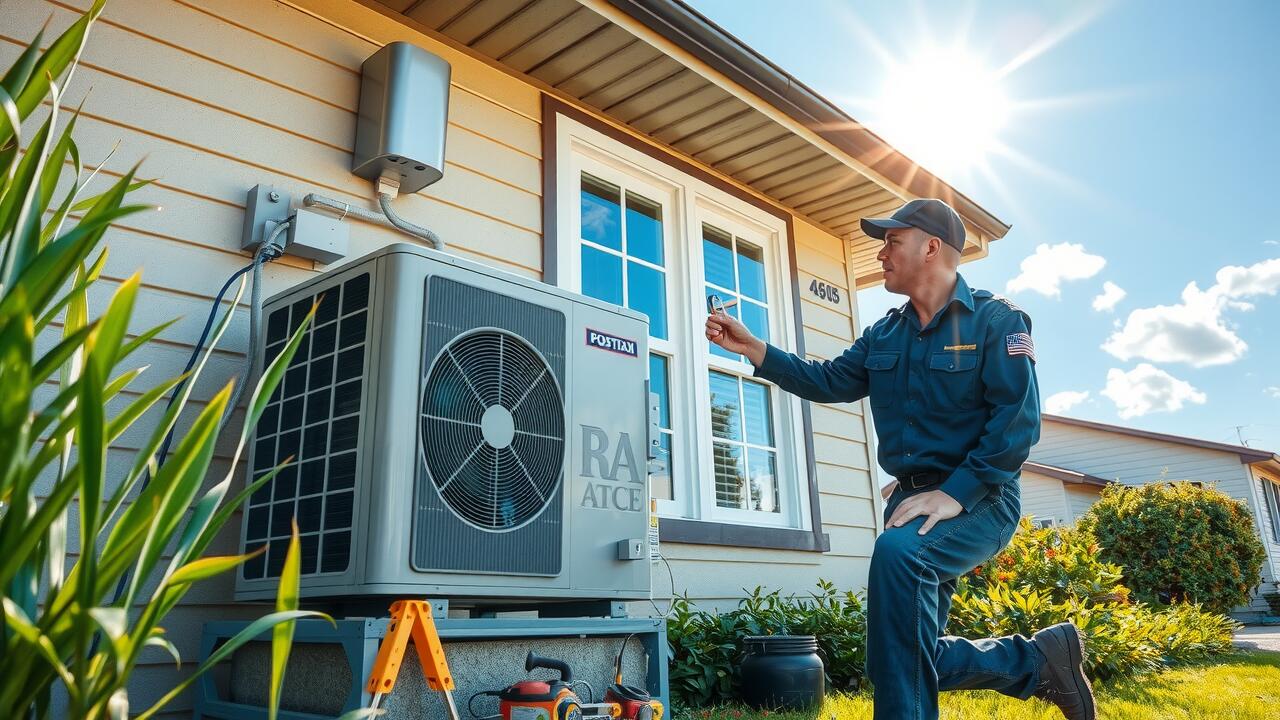
Following Manufacturer Guidelines
Adhering to manufacturer guidelines is a cornerstone of the Roundup of Best Practices for Air Conditioning Installation. These guidelines are designed to ensure proper installation of the system, enabling unrestricted airflow throughout the unit. Proper setup of the indoor air-handler and outdoor air components is crucial for achieving optimal performance. Without following the specifications, issues like limited airflow can arise, leading to challenges such as dry air in the environment. Correct blower settings and good ventilation practices are essential to facilitate effective heat exchange, ensuring that cold air stays consistent within the space.
Neglecting manufacturer recommendations can lead to inefficient operation and may create the need for a backup heating system during colder months. Proper installation is essential for maximizing the longevity and performance of both new heating systems and air conditioning units. A well-installed system reduces the risk of malfunctions and enhances comfort levels indoors. The Roundup of Best Practices for Air Conditioning Installation underscores the importance of these guidelines to achieve a system that runs smoothly and effectively.
Ensuring Proper Electrical Connections
Proper electrical connections are crucial for the effective operation of any air conditioning system. Following the equipment installation instructions is vital, particularly in a roundup of best practices for air conditioning installation. When considering your cooling process, whether opting for ductless air systems or heat pump heating solutions, it is important to ensure that all indoor units are correctly wired to avoid performance issues. Collaborating with a good installer who understands the specific installation needs of your chosen equipment combination can make all the difference.
Incorrect electrical connections not only jeopardize system efficiency but can also lead to safety risks. Insulation levels and electrical load requirements must be thoroughly evaluated during the installation phase. A well-planned and executed installation that adheres to all guidelines will minimize future complications and ensure that heat pump isn’t strained by improper wiring. Always prioritize safety and performance when finalizing your electrical setup to guarantee a reliable air conditioning experience.
Sealing Ducts and Insulating Lines
Proper sealing of ducts and insulating lines is crucial to ensuring an efficient air conditioning system. A comprehensive Roundup of Best Practices for Air Conditioning Installation emphasizes the importance of sealing to prevent the leakage of conditioned air. Airborne materials can enter through unsealed joints, leading to inefficiencies. Selecting insulation materials that meet minimum insulation dimensions is vital for maintaining a cooler indoor environment. HVAC companies often recommend different insulation types, with particular focus on the insulation surface to minimize heat transfer.
The effectiveness of a heat pump combines the efficiency of both heating and cooling systems, making it essential to insulate lines effectively. Ensuring that the indoor coil and associated components are well-insulated helps manage warm and cool air distribution throughout the space. Consulting with an only HVAC company ensures that standard wiring components are correctly installed and insulated, further enhancing system performance. Following these practices as part of the Roundup of Best Practices for Air Conditioning Installation guarantees optimal functionality and longevity of your air conditioning system.
Post-Installation Tips
Proper post-installation care is crucial for maximizing the benefits outlined in the Roundup of Best Practices for Air Conditioning Installation. Ensuring unobstructed air flow is vital for effective air movement throughout the space, which helps maintain optimal humidity levels and minimizes humidity problems. Keeping the unit away from heat sources enhances its efficiency. During the annual cooling season, conducting regular maintenance, such as checking ventilation openings and inspecting components like the pump or furnace, ensures that the system operates smoothly. A hvac sales appointment can guide homeowners in troubleshooting potential issues, and addressing any problems with vaporized refrigerant early can prolong the life of the unit established during initial installation.
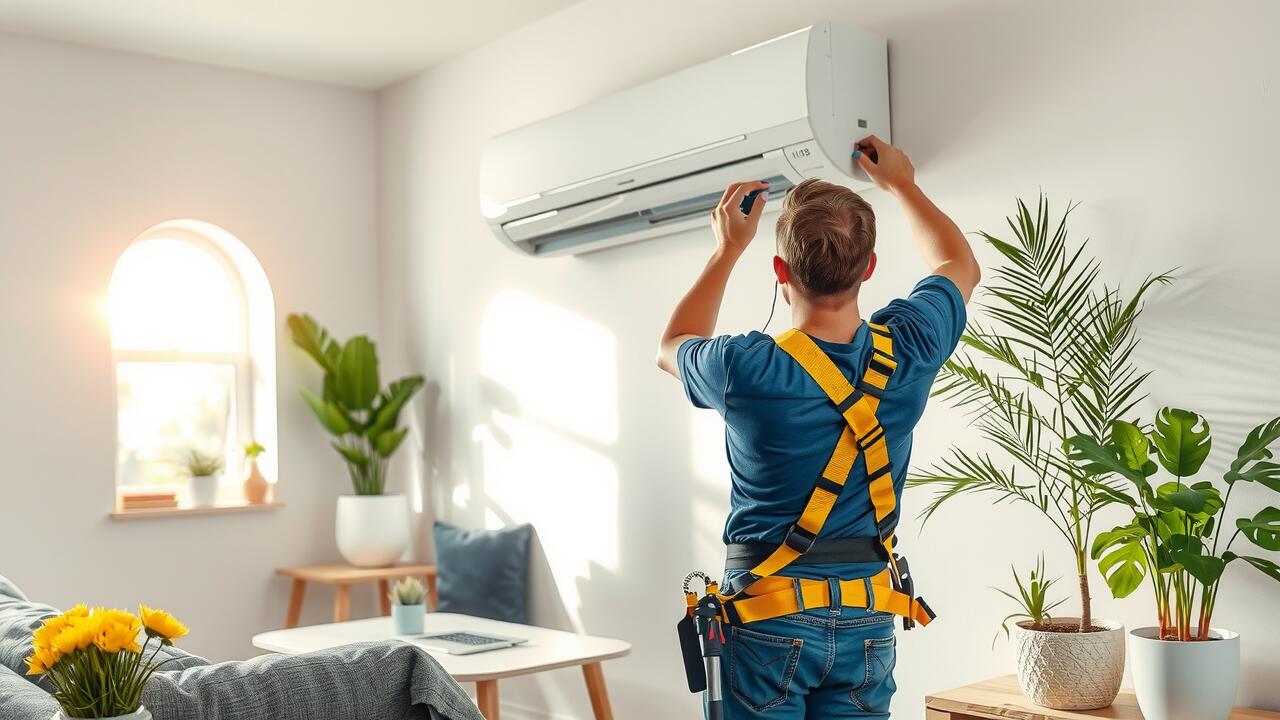
Regular Maintenance Recommendations
Establishing a robust maintenance program is vital for the longevity and efficiency of your air conditioning system. This includes regularly inspecting insulation thickness around ducts to minimize unconditioned air leaks. Pay close attention to the condenser work as it plays a crucial role in maintaining proper airflow. During humid summers, ensuring unobstructed air movement can prevent issues like poor cooling and reversed airflow cases. Following this Roundup of Best Practices for Air Conditioning Installation will help keep your equipment running smoothly.
Routine maintenance should also focus on cleaning or replacing filters to enhance airflow and efficiency. Dust and debris can accumulate over time, leading to a decrease in system performance. Professionals recommend scheduling regular check-ups to assess the overall condition of the unit, especially when new equipment is installed. This proactive approach safeguards against future issues, allowing for optimal performance even in challenging osu heat conditions.
Monitoring System Performance
Monitoring system performance ensures that your air conditioning operates at optimal levels. Implementing a maintenance schedule is crucial for identifying issues early, such as a dirty evaporator coil or pressure buildup. Following the installation guide and adhering to the installation manual can lead to high-efficiency operation. Regular checks during the space heating season can help manage heating costs while maintaining comfort.
An effective approach involves evaluating how well the condenser unit is functioning throughout the year. Regular assessments aligned with the Roundup of Best Practices for Air Conditioning Installation can prevent costly repairs and extend the lifespan of your system. Maintenance plans should incorporate detailed checks on both cooling and heating performance to ensure a balanced and energy-efficient environment in your home.
Common Mistakes to Avoid
Improper installation can lead to significant issues with air conditioning systems. A common mistake is neglecting to properly locate the outdoor unit, which can hinder airflow and reduce efficiency. Failing to clean the condenser coils will result in poor performance and an increased temperature drop, affecting the overall cooling capacity. Choosing a cheap furnace without considering furnace efficiencies often leads to higher operational costs in the long run. Ensuring the air handler is at the correct floor level helps maintain optimal air distribution. Reviewing the Roundup of Best Practices for Air Conditioning Installation can help prevent these pitfalls and ensure a well-functioning system.
| Mistake | Description | Consequences |
|---|---|---|
| Improper Location of Outdoor Unit | Neglecting to place the unit in an area with adequate airflow. | Reduced efficiency and potential overheating. |
| Dirty Condenser Coils | Failing to clean coils regularly can cause blockages. | Poor performance and increased energy consumption. |
| Choosing Low-Efficiency Furnace | Opting for cheaper models without considering efficiency ratings. | Higher operational costs and reduced comfort levels. |
| Incorrect Air Handler Level | Installing the air handler at an improper floor level. | Inefficient air distribution and potential moisture issues. |
Conclusion
The Roundup of Best Practices for Air Conditioning Installation highlights critical factors that ensure efficient operation and longevity of HVAC systems. Proper handling of warm house air is vital to maintaining indoor temperature and preventing airflow issues. A professional HVAC technician should be consulted to address common HVAC issues and ensure adequate cooling. Careful consideration of outlet airflow facilitates optimal performance of an AC/heat pump, while implementing continuous air barriers prevents hot air infiltration. Following these best practices not only enhances system efficiency but also contributes to a comfortable living environment, making it essential for homeowners to prioritize these steps in their installation process.
FAQS
What are the best practices for installing new air conditioners to ensure optimal performance of air-conditioning systems?
To ensure optimal performance of air-conditioning systems when installing a new air conditioner, it is crucial to properly locate the condenser and air handler, select suitable insulation materials, and consider different equipment combinations. Additionally, maintaining the right airflow rate and avoiding heat sources will help prevent repairs. Regular annual maintenance by HVAC experts can also enhance efficiency, while ensuring the pump/furnace operates effectively. Lastly, monitoring humidity offers and implementing proper blower settings are essential for achieving cooler air throughout your home.
How can proper equipment choice and insulation materials impact the efficiency of heating & air conditioning systems during air conditioner installation?
Proper equipment choice and selecting the right insulation materials are vital for the efficiency of heating & air conditioning systems. For modern air conditioners, it is essential to avoid heat sources that can affect performance. Additionally, ensuring proper blower settings and the correct location of the condenser and air handler can help prevent repairs and enhance the operation of the AC/heat pump/furnace systems. By maintaining optimal base temperature and ensuring cool air sinks efficiently, you can significantly improve the overall performance of your air conditioner work.
How can the proper location of the condenser and air handler affect east air conditioning systems and why is it important to select insulation materials to prevent repairs?
Properly locating the condenser and air handler is vital for east air conditioning systems because it directly influences airflow and efficiency. When these components are positioned correctly, they can significantly enhance performance. Additionally, selecting insulation materials wisely is essential to avoid energy loss and prevent repairs. If insulation is insufficient or improper, it can lead to the need for repairs due to stress on the system caused by improper blower settings and temperature fluctuations affecting the floors.
Why is it important to properly locate the condenser and air handler during air conditioning installation, and how does it relate to selecting insulation materials to prevent repairs?
Properly locating the condenser and air handler is crucial because it can enhance the overall efficiency of air conditioners. This strategic placement ensures optimal airflow and minimizes energy loss. Additionally, selecting insulation materials that are appropriate for the installation can significantly reduce the potential for issues that lead to repairs. The reason air conditioners operate better is that proper positioning minimizes strain on the system, ensuring longevity and reducing maintenance costs. Therefore, investing in quality insulation and careful location of components can ultimately prevent repairs and enhance system performance.
How do different strategies for installation help in preventing repairs when you properly locate the condenser and air handler and select insulation materials?
Utilizing effective strategies during air conditioning installation can significantly prevent repairs by ensuring that systems operate efficiently. When you properly locate the condenser and air handler, it enhances airflow and efficiency, while selecting insulation materials effectively minimizes energy loss, further reducing the risk of future issues.
What steps should be taken to prevent repairs during air conditioning installation, and how do they relate to selecting insulation materials and properly locating the condenser and air handler?
To prevent repairs during air conditioning installation, it is crucial to properly locate the condenser and air handler, as this can significantly influence the system's efficiency and longevity. Additionally, selecting insulation materials that are appropriate for the climate and the specific installation can minimize energy loss and potential damage, ensuring that the system operates effectively for years to come.
What measures can be taken during air conditioning installation to prevent repairs related to selecting insulation materials and properly locating the condenser and air handler?
To prevent repairs during air conditioning installation, it's essential to select insulation materials that are adequate for the specific climate and building structure. Additionally, you must properly locate the condenser and air handler to ensure optimal airflow and system efficiency. Proper installation practices, including ensuring tight seals on ductwork and avoiding obstruction of airflow, will also help in minimizing the chances of future repairs.
What strategies can be employed during air conditioning installation to prevent repairs while ensuring that you properly locate the condenser and air handler?
To prevent repairs during air conditioning installation, it's essential to properly locate the condenser and air handler. This involves choosing an appropriate location that optimizes airflow and efficiency. Additionally, ensuring that all components are installed according to manufacturer specifications and building codes can aid in preventing issues. Regular maintenance and checks after installation help to confirm that everything is functioning correctly, reducing the likelihood of future repairs.
What are some effective strategies to prevent repairs in air conditioning systems when you properly locate the condenser and air handler?
To prevent repairs in air conditioning systems, it's essential to ensure that you properly locate the condenser and air handler. Key strategies include assessing the installation environment, ensuring adequate airflow around the unit, and using high-quality insulation materials to reduce thermal loss. Additionally, regular maintenance checks and following manufacturer guidelines can further help to prevent repairs while ensuring optimal performance of your air-conditioning system.
What specific measures can be implemented during air conditioning installation to prevent repairs, particularly in relation to how to properly locate the condenser and air handler?
During air conditioning installation, to prevent repairs, it is crucial to ensure that you properly locate the condenser and air handler. This involves selecting an optimal position that maximizes airflow and efficiency, while also considering maintenance access. Additionally, proper installation techniques and attention to connecting components can further reduce the likelihood of future repairs when you call air for service.

